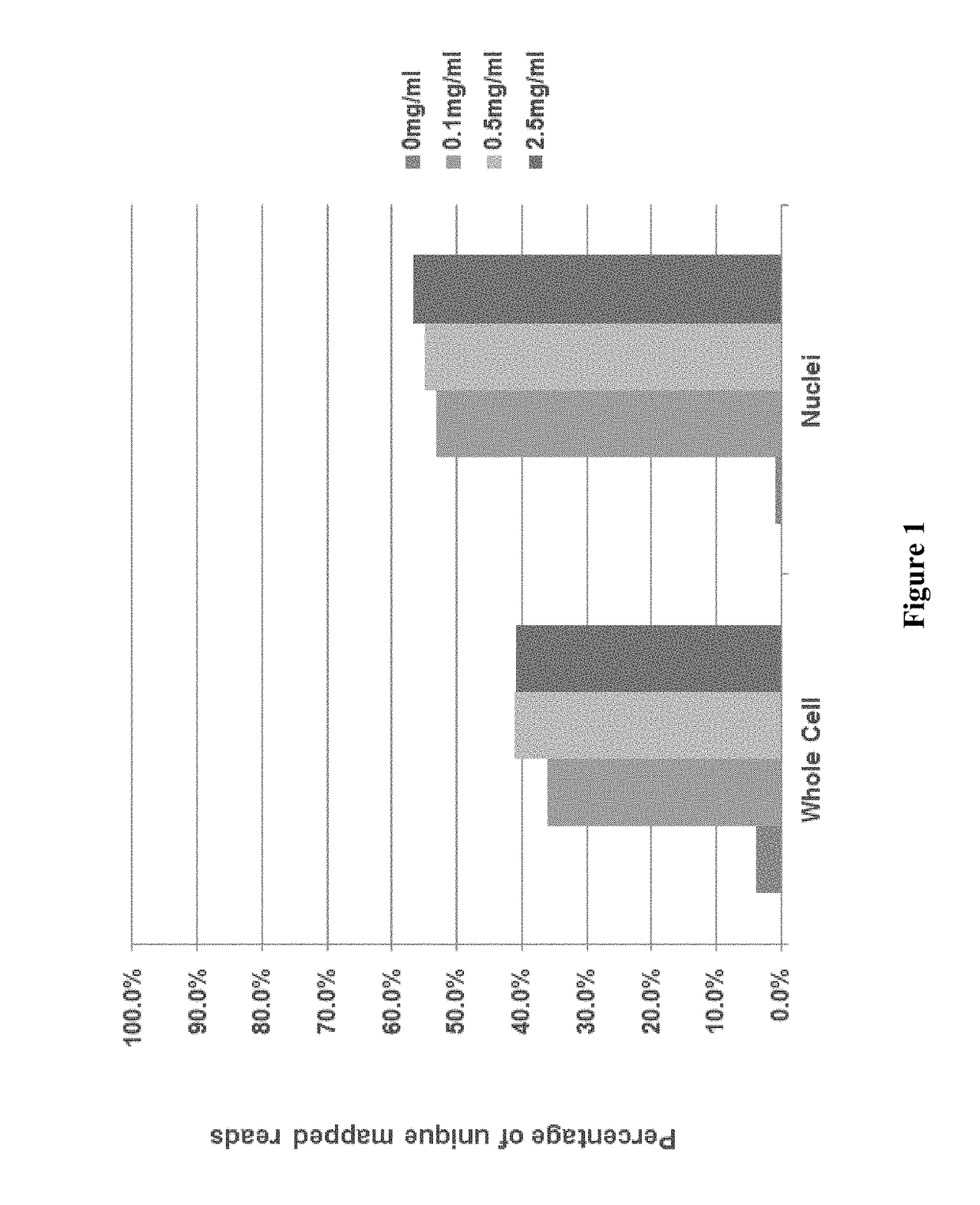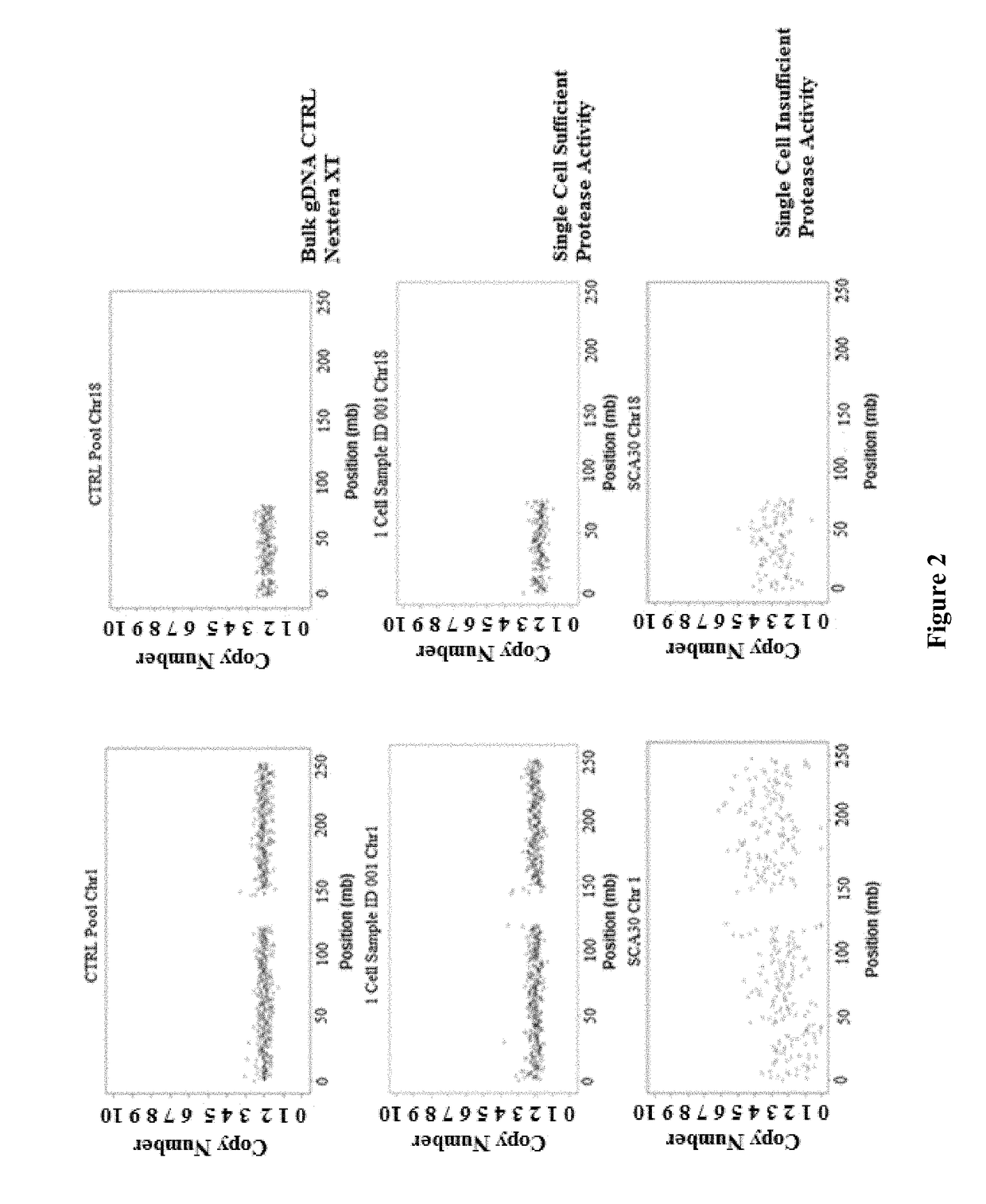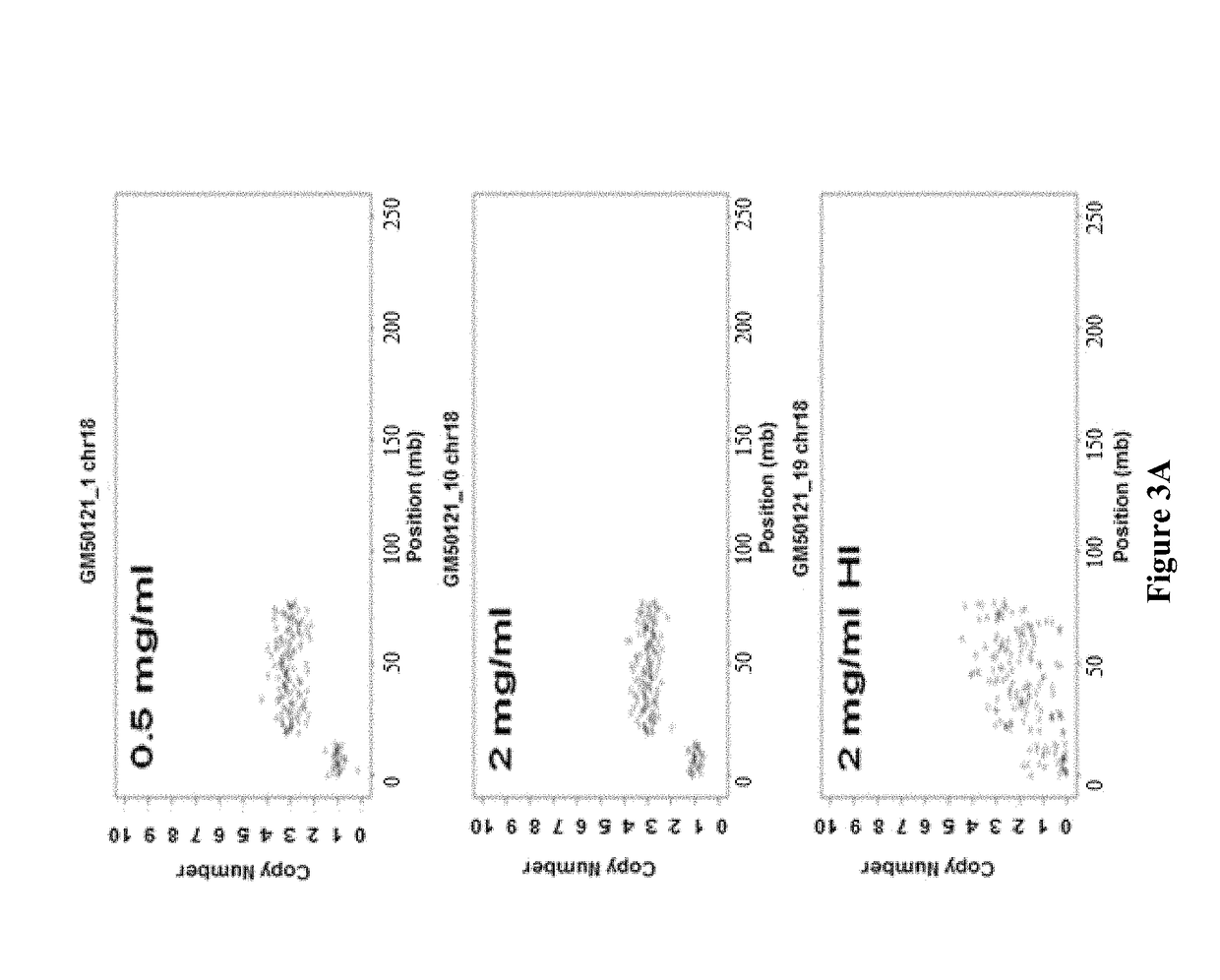Library preparation of tagged nucleic acid
a technology of nucleic acid and library, which is applied in the field of library preparation of nucleic acid fragments, can solve the problems of inability to qualitatively prepare nucleic acid, and the inability of amplification to ensure the representativeness of target nucleic acid
- Summary
- Abstract
- Description
- Claims
- Application Information
AI Technical Summary
Benefits of technology
Problems solved by technology
Method used
Image
Examples
example 1
Generation of Cell Lysate Containing Target Nucleic Acid
[0152]In some embodiments, during the step of generating a cell lysate, cell membranes are disrupted by the detergent during which protein-lipid and lipid-lipid association are broken, and thereby releasing intracellular materials in soluble form. The major function of broad-specificity protease is to remove DNA-binding proteins such as histones from the DNA to allow uniform access of the transposase to the DNA. In some embodiments, as illustrated in this example, the detergent and the protease provide are in a single lysis reagent mixture. The mixture is directly applied to the cells for generating a cell lysate containing the target nucleic acid. As discussed above, in some embodiments, when heat is used to inactivate the protease, it is important that the heat does not denature the double-stranded nucleic acid, and to ensure that the tagmentation step is not interfered.
[0153]In this example, the protease can be heat inactiva...
example 2
Tagmentation of Target Nucleic Acid Directly in Cell Lysate
[0169]In some embodiments, the genomic DNA in the cell lysate, e.g., as prepared in Example 1 can be tagmented (tagged and fragmented) by the Nextera transposome (available from Illumina, Inc, San Diego, Calif.). The Nextera transposome can simultaneously fragments the input DNA and adds tag / adapter sequences to the ends. The tagmentation master mixture can be directly added to the cell lysate prepared in Example 1 without any prior DNA purification or amplification step. The tagmentation master mixture can be prepared as shown in Table 6 below and the master mixture can be scaled up, e.g., 10% extra to compensate for losses during pipetting, according the number of samples.
[0170]
TABLE 6Components of Tagmentation Master MixtureComponentVolume (μl)Tagmentation DNA Buffer11Nextera Amplicon Tagment2.2MixtureSuper Q H2O3.3Total16.5
[0171]The Tagmentation DNA Buffer and Nextera Amplicon Tagment Mixture are available from Illumina,...
example 3
Limited-Cycle PCR Amplification
[0172]The tagmented DNA fragments, e.g., as prepared in Example 2, can be amplified by a limited-cycle PCR program. This PCR step can also add other sequences at the two ends of the tagged nucleic acid fragments, e.g., index 1 (i7) and index 2 (i5) (available from Illumina, Inc, San Diego, Calif.) and sequences required for other purposes, e.g., cluster formation. For example, the following components in Table 7 (available from Illumina, Inc, San Diego, Calif.) can be added to the neutralized tagmentation produced from Example 3.
[0173]
TABLE 7Components for Limited-Cycle PCRComponentVolume (μl)PCR Master15MixtureIndex 15Primer (P5primer)Index 25primer (P7primer)
[0174]The PCR master mixture in Table 7 can be prepared as in Table 8 below:
[0175]
TABLE 8Components of PCR Master MixtureStockMaster MixVolumeComponentConcentrationConcentration(μl)KAPA HiFi Fidelity Buffer5X3.33X999dNTP Pool25 mM each1.00 mM each59.94KAPA HiFi DNA1 U / μl0.033 U / μl49.95PolymeraseS...
PUM
| Property | Measurement | Unit |
|---|---|---|
| pH | aaaaa | aaaaa |
| temperature | aaaaa | aaaaa |
| temperature | aaaaa | aaaaa |
Abstract
Description
Claims
Application Information
 Login to View More
Login to View More - R&D
- Intellectual Property
- Life Sciences
- Materials
- Tech Scout
- Unparalleled Data Quality
- Higher Quality Content
- 60% Fewer Hallucinations
Browse by: Latest US Patents, China's latest patents, Technical Efficacy Thesaurus, Application Domain, Technology Topic, Popular Technical Reports.
© 2025 PatSnap. All rights reserved.Legal|Privacy policy|Modern Slavery Act Transparency Statement|Sitemap|About US| Contact US: help@patsnap.com



